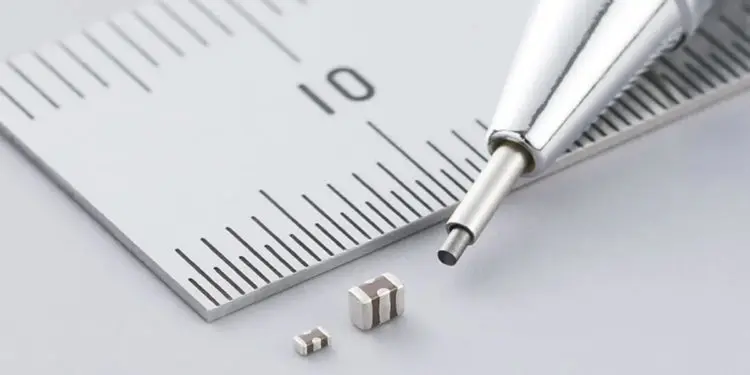Murata has now begun volume production of two new multi-layer ceramic capacitors (MLCCs). Each of these components exhibits low levels of equivalent series inductance (ESL) and is targeted at automotive implementation.
Supplied in a 0402 format (with 1.0 mm x 0.5 mm dimensions) and providing a 1 µF capacitance, the NFM15HC105D0G3 is the world’s smallest three-terminal low-ESL MLCC. This is complemented by the NFM18HC106D0G3, which has a 10 µF capacitance, making it the highest capacity three-terminal low-ESL MLCC in a 0603 (1.6 mm x 0.8 mm) form factor.
The amount of electronic content being incorporated into automobile designs is rising dramatically, as advanced driver assistance system (ADAS) implementations become more commonplace and higher levels of vehicle autonomy start to develop. This is resulting in the utilization of a greater number of electronic control units (ECUs) and the ramping up of processing resources which in turn need next-generation MLCCs to accompany them. These components must combine elevated capacitance figures and superior ESL characteristics with compact size and strong reliability, so that both performance demands and board space limitations can be met accordingly.
The new MLCCs utilize Murata’s own proprietary thin-layer technology, as well the company’s expertise in high-precision lamination and advanced electrode construction. As a consequence, the NFM15HC105D0G3 occupies a volume that is as much as 60% smaller than competing MLCCs on the market. Likewise, the NFM18HC106D0G3 has a capacitance that is approximately ten times higher than many MLCCs of a similar size. Fully compliant with AEC-Q200 standards, these components support an -55°C to +125°C operational temperature range. Both have a 2 A current rating.
Main specifications
| Product name | NFM15HC105D0G3 | NFM18HC106D0G3 |
|---|---|---|
| Size (L x W x T) | 1.0mm×0.5mm×0.4mm | 1.6mm×0.8mm×1.25mm |
| Capacitance | 1µF | 10µF |
| Capacitance tolerance | ±20% | ±20% |
| Usage temperature range | -55~+125°C | -55~+125°C |
| Rated voltage | 4Vdc | 4Vdc |
| Other | AEC-Q200*2 compliant | AEC-Q200*2 compliant |
| *2 Industry standard for passive components (capacitors, inductors, etc.) set by the Automobile Electronics Council |































